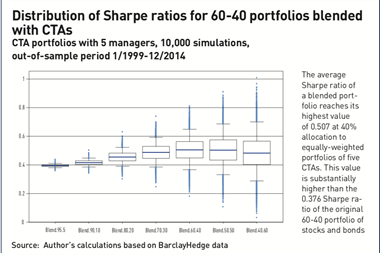The equity-dominated default fund run by AP7, the largest of Sweden’s national pension funds, underperformed its benchmark in the first half of this year, and made twice the loss suffered by private funds in the premium pension system.
In its interim report for January to June, the Stockholm-based fund revealed an average 7.2% loss for the default fund, Såfa – a result it said was 1.4 percentage points worse than the benchmark.
In the same period, AP7 said the privately-operated premium pension funds produced an average return of 3.2%.
The premium pension system is the defined contribution portion of Sweden’s state pension, in which individuals can choose from a range of private investment funds or be included in AP7’s default fund.
Over the last 10 years, Såfa has produced an average annual return of 13.5% however, easily beating the average annual 7.8% return of the private funds, according to AP7’s interim report.
Because Såfa is a life-cycle fund, AP7 explained that the distribution between equity and fixed income differed for different cohorts, so the return varied for savers of different ages.
Total risk for the default fund – standard deviation over 24 months – had been 14.5% compared to 10.2% for the average private premium pension fund, the fund reported.
“AP7 Såfa’s higher risk is largely due to the fact that AP7 Såfa has a high stock market exposure for young savers,” the pension fund said, adding that because the proportion of savers over the age of 55 in the default fund was still low, so was its proportion of interest-bearing instruments.
AP7’s equity fund – by far the larger of its two building-block sub-funds – ended the first half with a 7.8% investment loss, while the bond fund produced a 0.75% gain, which was 0.05 of a percentage point below benchmark.
Although the equity fund staged a strong recovery in the second quarter following dramatic market falls in March from the COVID-19 shock, AP7 said this bounce back had been dampened by the strengthening of the krona against the dollar.
“In Swedish kronor, the American market is down by about 3.5%. Emerging markets that make up almost 17% of the equity fund have developed somewhat more weakly where the decline measured in Swedish kronor amounts to about 5%,” the pension fund said in the report, referring to the half year ending 30 June.
In the reporting period, AP7 said its operations had focused on portfolio management and the strategic work to increase the fund’s diversification, for example through investments in small companies and risk premiums.
AP7’s combined assets of both funds declined to SEK629.4bn at the end of June from SEK674.2bn at the end of 2019.
AP7 is facing a major overhaul as the current broad reform of the premium pension system in Sweden rolls on, with a bill including changes to its overall target as well as its investment rules due to come into force next April.








No comments yet